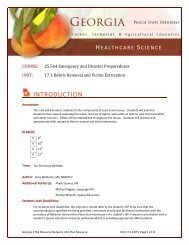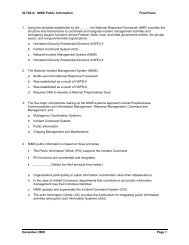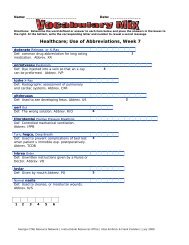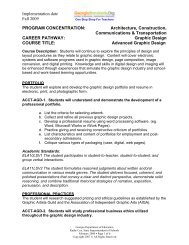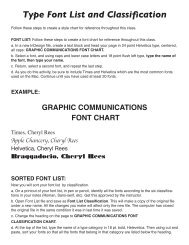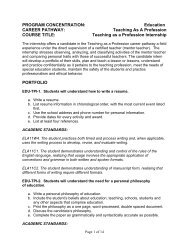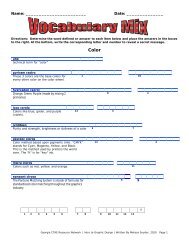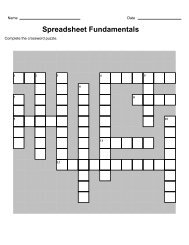emt-basic curriculum module 4
emt-basic curriculum module 4
emt-basic curriculum module 4
You also want an ePaper? Increase the reach of your titles
YUMPU automatically turns print PDFs into web optimized ePapers that Google loves.
State of WisconsinEMT-Basic: A Practice BasedApproach to EMS EducationIV.(1) White, waxy skin(2) Firm to frozen feeling upon palpation(3) Swelling may be present(4) Blisters may be present(5) If thawed or partially thawed, the skin may appearflushed with areas of purple and blanching ormottled and cyanotic4. Emergency medical care for local cold injuriesa) Remove the patient from the environmentb) Protect the cold injured extremity from further injuryc) Administer oxygen if not already done as part of the initialassessmentd) Remove wet or restrictive clothinge) If early or superficial injury(1) Splint extremity(2) Cover the extremity(3) Do not rub or massage(4) Do not re-expose to the coldf) If late or deep cold injury(1) Remove jewelry(2) Cover with dry clothing or dressings(3) Do not:(a) Break blisters(b) Rub or massage area(c) Apply heat(d)(e)RewarmAllow the patient to walk on the affectedextremityg) When an extremely long or delayed transport isinevitable, then active rapid rewarming should be done(1) Immerse the affected part in warm water bath. Donot let limb touch the sides or bottom of thecontainer.(2) Monitor the water to ensure it does not cool fromthe frozen part(3) Continuously stir water(4) Continue until the part is soft and color andsensation return(5) Dress the area with dry sterile dressings. If handor foot, place dry sterile dressings between fingersor toes.(6) Protect against refreezing the warmed part(7) Expect the patient to complain of severe painExposure to HeatA. Predisposing factors1. ClimateModule 4-75



